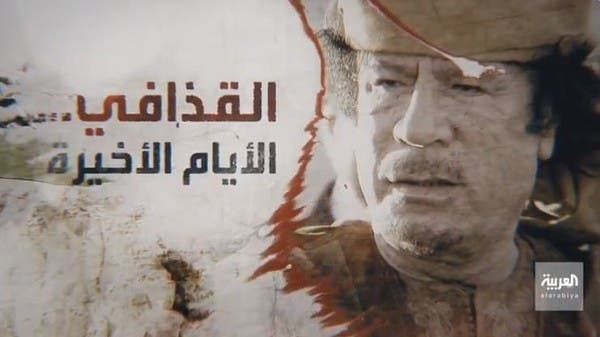[ad_1]
As part of a documentary series on the last days of the late Libyan Colonel Muammar Gaddafi, his nephew, Mahmoud Abdel Hamid, has revealed one of the most mysterious points about his murder case and the location of his body.
In episodes aired on Al-Arabiya last week, he touched on the details of the burial of the bodies of Gaddafi, Abu Bakr Yunus (Minister of Defense) and his son Al-Mu’tasim Billah.
He also explained that after praying for the bodies, the bodies were put in a car, and I drove them at night to an unknown location, but he noted that the car had traveled for over an hour and half, or nearly 150 kilometers in the desert of Misrata.
He said, “After praying for the bodies in the agricultural marketing area, we headed at night to an unknown location, and the drive was about an hour and a half by car, and they (the gunmen) did not. did not allow me to look at the sides of the road so as not to locate it.
The last night
Faraj Ibrahim, the personal escort of the late Libyan president, also spoke about the details of the last night of his life and how the clashes unfolded before he was killed on October 20, 2011.
He recounted what happened in the last hours of the Libyan colonel’s life, after the demonstrators managed to besiege him.
He also revealed that he and his companions made the decision to persuade Gaddafi of the need to storm the siege after strong resistance from both sides and after protesters temporarily retreated at night in preparation for the continuation of the siege. clashes the next day.
He pointed out that he and his companions had tried to equip an armored car with primitive armor using sandbags, but a falling shell ruined what they had done, adding that “They were late to leave their stronghold after it was scheduled to move in the middle of the night due to interference from NATO aircraft and continuous 3-time bombardment.”
NATO strikes
Further, he explained that the first NATO strike hit the guard car which was directly behind Gaddafi’s car, killing the driver and his companions. Then came the second strike and destroyed the vehicles, forcing them to disembark and fortify the Safran area with houses under construction, then the clashes began, according to what the spokesperson said, noting that most of the guards and escorts had been killed by heavy weapons. .
Gaddafi’s personal attendant also recalled that in the midst of this bombardment, the Libyan colonel and some of those who remained with him had to flee and leave these houses whose walls were penetrated with bullets, which was the last moment when he saw it.
Around noon that day, Ibrahim said, he saw protesters from a distance wrapped around the ambulance and heard voices and chants saying that Gaddafi was dead.
Source link
